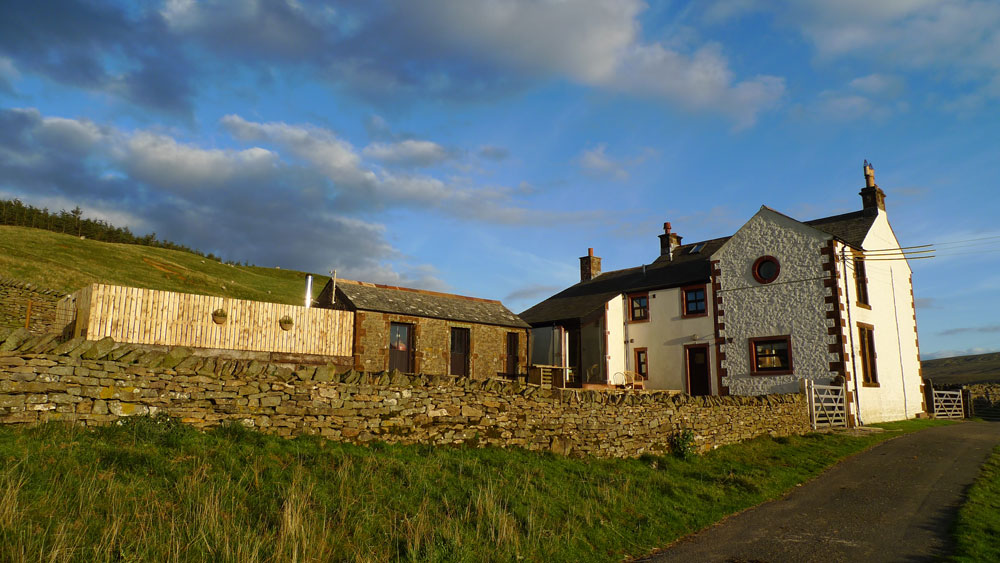Our ‘Walking Roots’ blog draws to a close, after centuries of folk walking, riding and ultimately driving through our tiny upland hamlet. The underlying landscape, and even some of the ancient forest in the gorge below our house, has remained essentially unchanged, but on the surface paths and tracks, walls and dwellings, have come and gone. Looking back through history one becomes very aware of the transient nature of human activity, even in a quiet backwater such as this.
The ‘lost village’ of High Ewebank, bypassed by the new turnpike road in the 18th century, has left little or no trace. On the other hand, some of the paths and tracks have finally gained permanent status, after years of meandering here and there as people made their way as best they could. A few footpaths in the valley are now designated public rights of way and will, with luck, be protected for centuries to come. Much of the higher fell above the hamlet falls into the hard-won ‘open access’ land, where we all have the right to roam at will.
The old road to High Ewebank, which would once have been the main packhorse route and coal road from Brough to Tan Hill, was adopted by the local council in the mid-19th century and is now a ‘proper’ tarmac road. It may not be pretty but we are very glad that it is looked after by the council; it takes quite a bashing from tractors and quad bikes, particularly during the winter, and there are always potholes to fill. It is a reminder of the time when the inhabitants of High Ewebank petitioned for the right to levy tolls on horses carrying coal along the track to help with upkeep. Winter snow and ice is hard on any road or track surface.
The last couple of decades have seen as much concern over ‘information transport’ as physical pathways. The availability of internet access has caused much debate and some frustration in out-of-the-way rural areas. Being able to run the Walkingworld website made broadband an essential requirement when we moved to Tufton Lodge. We were delighted to discover that BT’s copper cables were just capable of carrying an ADSL signal over a distance that was more than officially possible, although we needed regular visits from BT engineers to keep it functioning. We always referred to it as ‘super-slow broadband’; while others boasted of being able to download whole movies in seconds we lumbered along at half a megabite a second. A half hour BBC programme on iPlayer took all night to download.
We weren’t complaining. It was still possible to answer emails and do simple updates to walks on the website and we went elsewhere if something heavier duty needed doing. But our internet troubles were, in many ways, indicative of how isolated this place is and how communication through the ages must have always felt very slow. In the days before cars news would have travelled to High Ewebank literally at a walking pace.
Today, high speed internet comes not through cables in the ground but over the mobile phone signal. We get download speeds we never imagined possible on a 4G network that only occasionally fails (usually when we have one of our fairly regular mini power cuts). Traffic, of an electronic kind, has finally been released from the earth and, in one sense at least, our little hamlet is as connected to the outside world as anywhere.
 Walkingworld
Walkingworld
